inlandWaters
Type of resources
Available actions
Topics
Keywords
Contact for the resource
Provided by
Representation types
Update frequencies
status
-
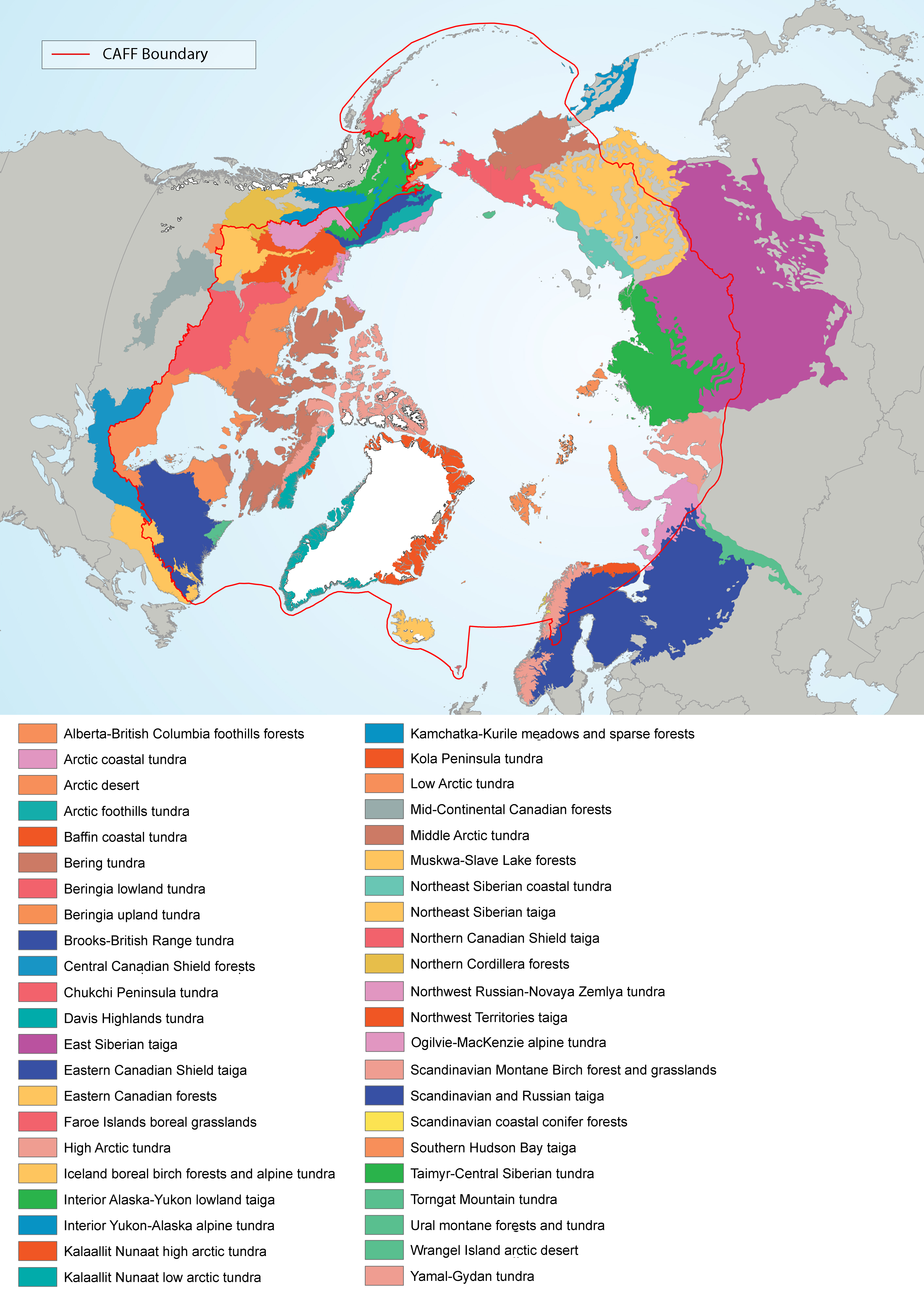
Figure 4-5 Terrestrial ecoregions that are included within the circumpolar region within the CAFF boundary and/or the ABA boundaries. Source: Terrestrial Ecoregions of the World (TEOW; Olson et al. 2001). State of the Arctic Freshwater Biodiversity Report - Chapter 4 - Page 28 - Figure 4-5
-
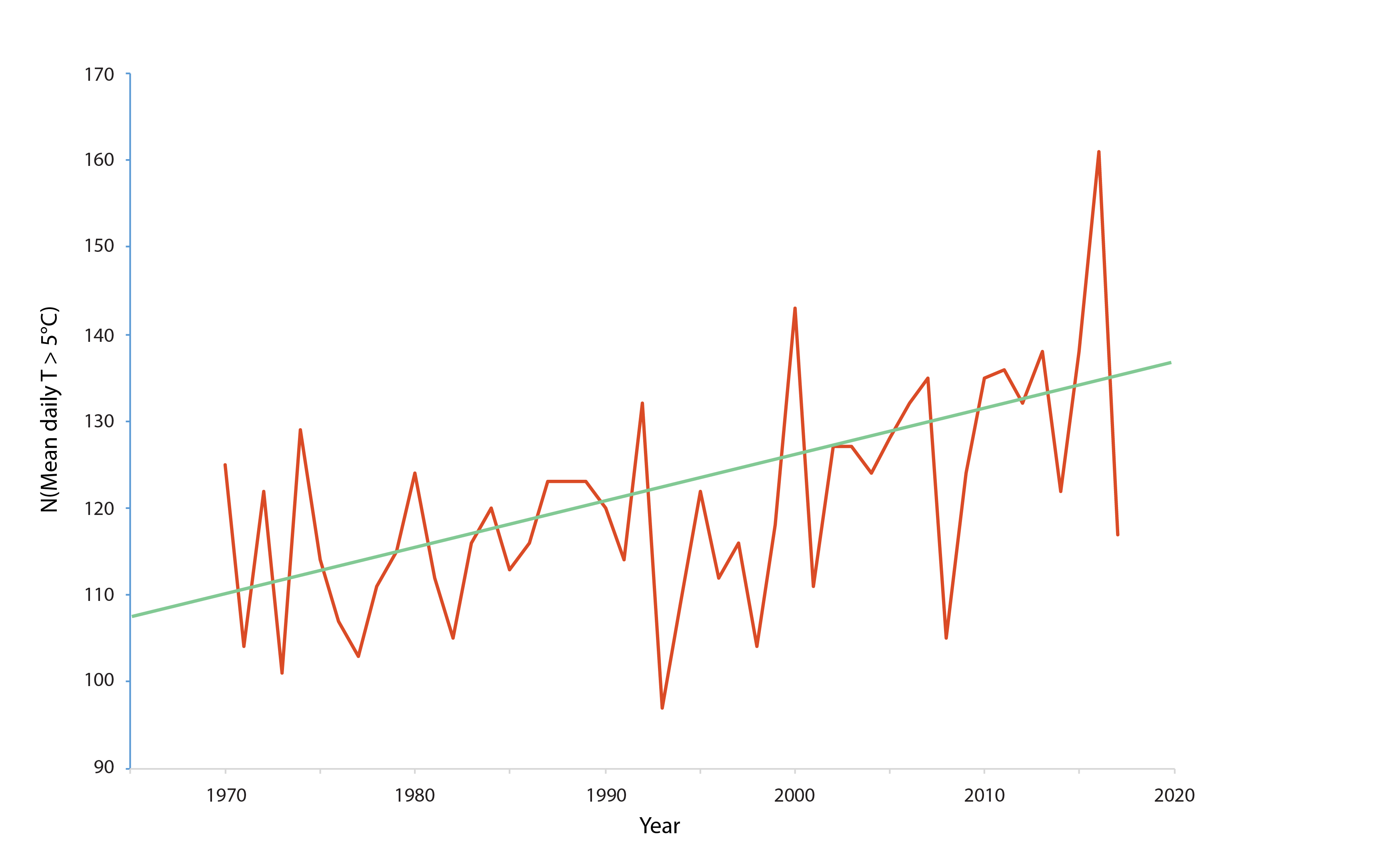
Figure 3-2 Long-term water temperature trends (1970–2017) for the Utsjoki Nuorgam station in the River Tana (69°N in Finland). The diagram shows the number of days per year with a mean temperature exceeding 5°C. The data show that from 1995 to 2017, this indicator increased by over 0.5 days per year. Data source: Finnish Meteorological Institute. State of the Arctic Freshwater Biodiversity Report - Chapter 3 - Page 15 - Figure 2-1
-
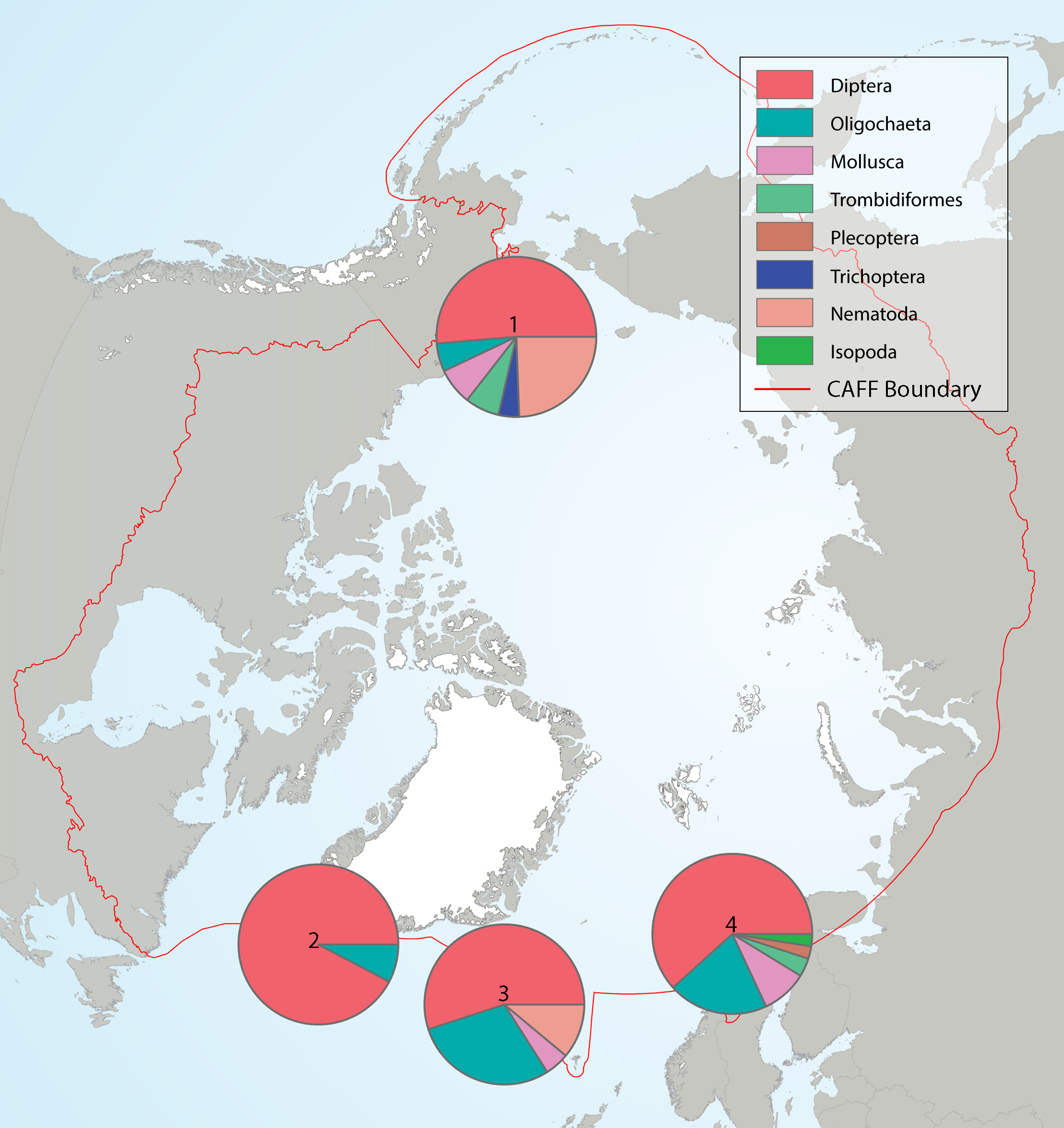
Summary of the taxa accounting for 85% of the lake littoral benthic macroinvertebrates collected in each of several highly-sampled geographic areas, with taxa grouped by order level or higher in pie charts placed spatially to indicate sampling area. Pie charts correspond to (1) Alaska, (2) Greenland low Arctic, (3) Iceland, and (4) Fennoscandia. State of the Arctic Freshwater Biodiversity Report - Chapter 4 - Page 69 - Figure 4-33
-
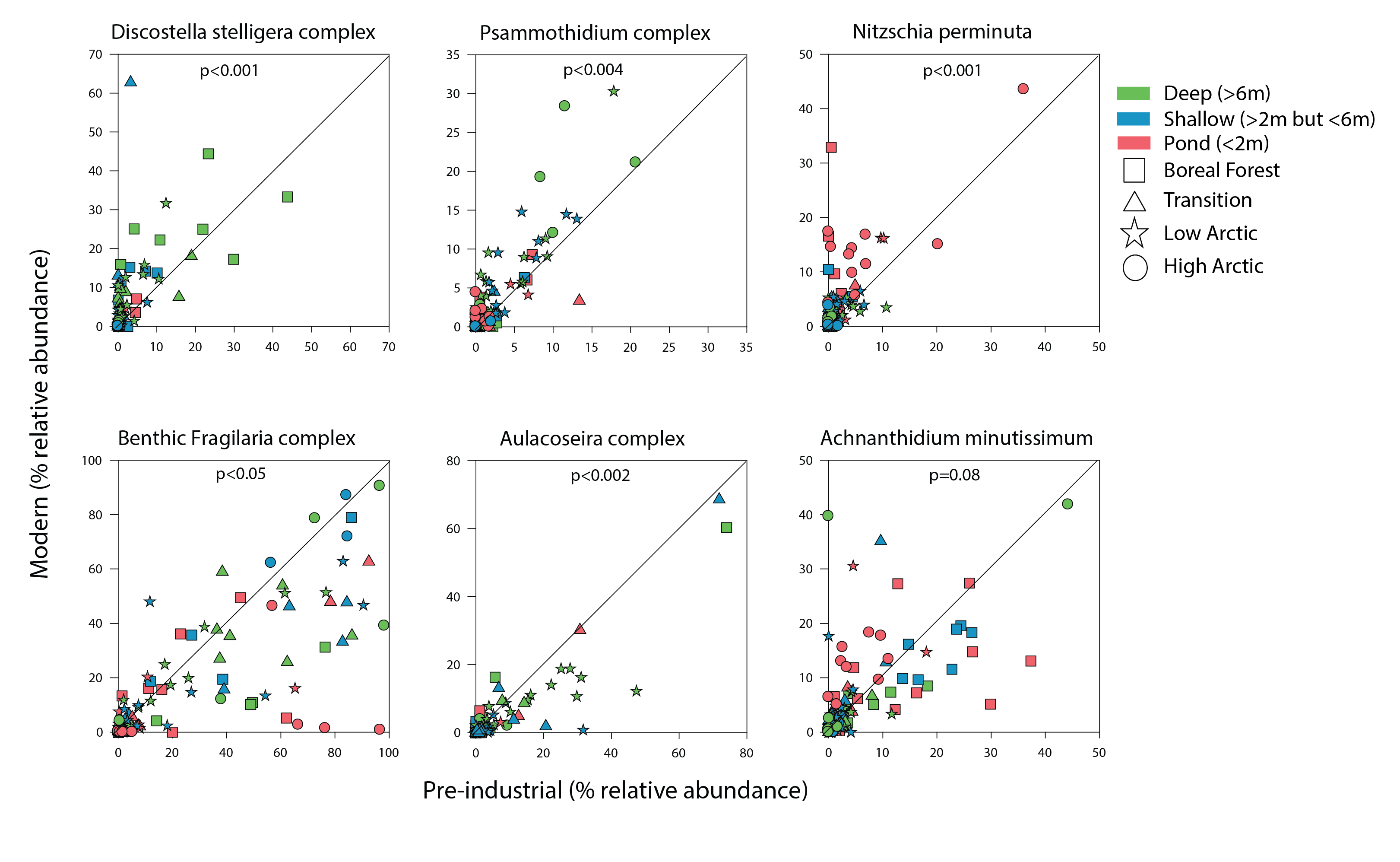
Figure 4 15 Comparison of the relative abundance of select diatom taxonomic groups between core bottoms (pre-industrial sediments; x- axis) and core tops (modern sediments; y-axis) with a 1:1 line to indicate whether there were higher abundances in fossil samples (below red line) or modern samples (above red line). State of the Arctic Freshwater Biodiversity Report - Chapter 2 - Page 15 - Figure 2-1
-
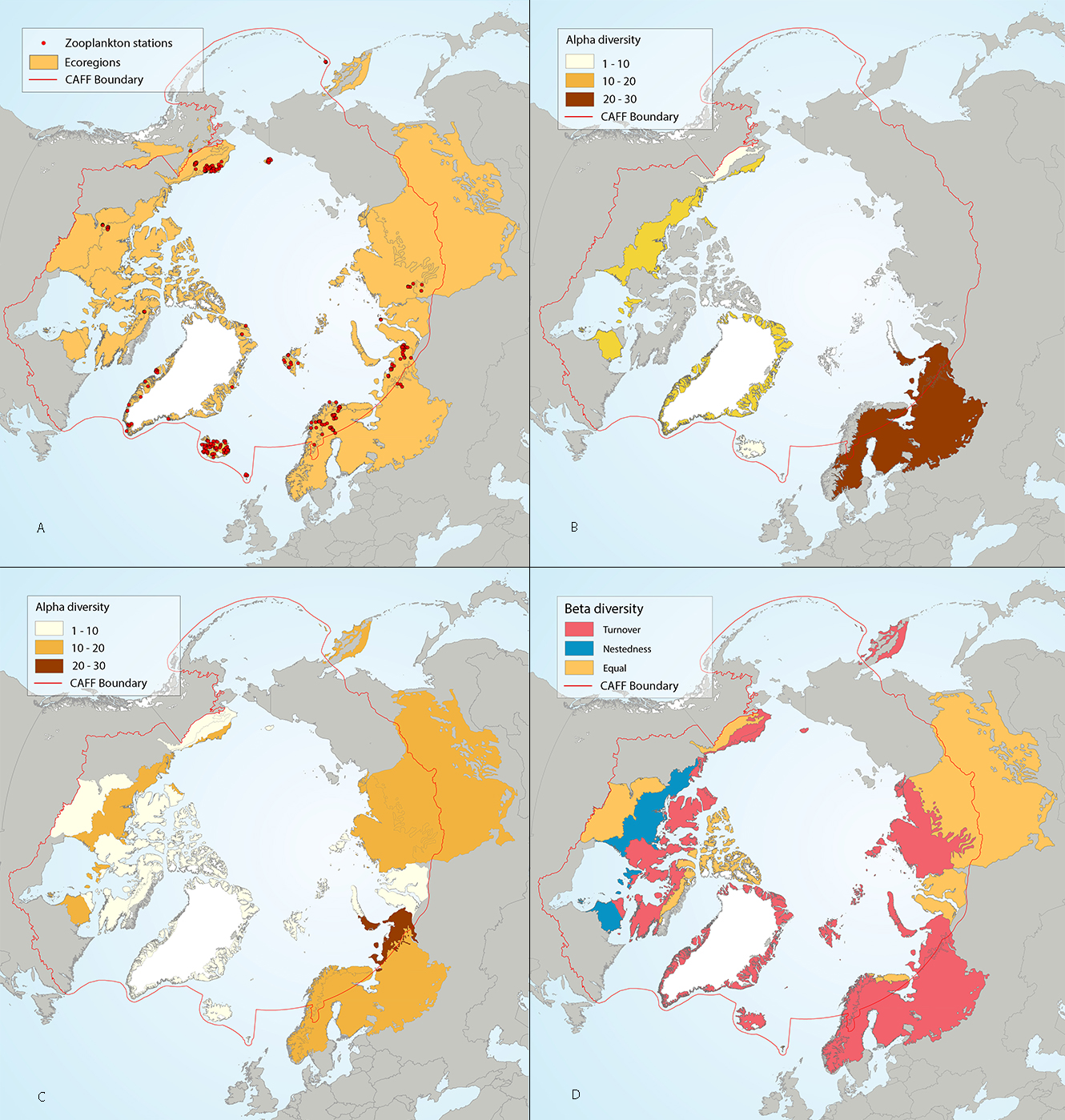
Results of circumpolar assessment of lake zooplankton, focused just on crustaceans, and indicating (a) the location of crustacean zooplankton stations, underlain by circumpolar ecoregions; (b) ecoregions with many crustacean zooplankton stations, colored on the basis of alpha diversity rarefied to 25 stations; (c) all ecoregions with crustacean zooplankton stations, colored on the basis of alpha diversity rarefied to 10 stations; (d) ecoregions with at least two stations in a hydrobasin, colored on the basis of the dominant component of beta diversity (species turnover, nestedness, approximately equal contribution, or no diversity) when averaged across hydrobasins in each ecoregion. State of the Arctic Freshwater Biodiversity Report - Chapter 4 - Page 58 - Figure 4-25
-
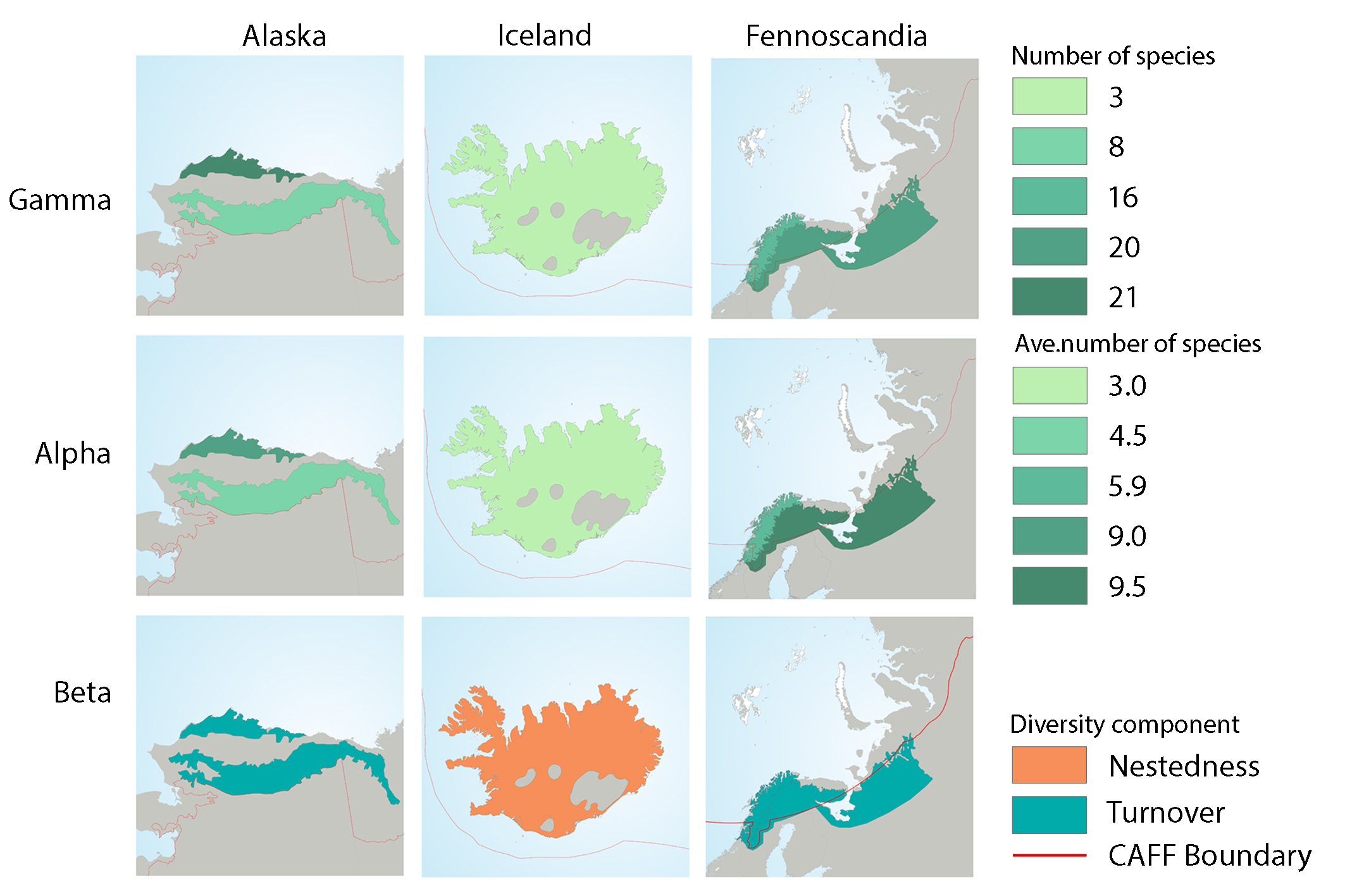
Fish diversity characteristics in three geographical regions: Alaska, Iceland, and Fennoscandia. Gamma diversity is based the total number of species sampled in hydrobasins of each ecoregion. Alpha diversity shows the mean basin species richness (95% confidence interval) and beta diversity shows the component of beta diversity, nestedness or turnover, that dominated within each of the ecoregions; gamma, alpha, and beta diversity estimates were based on a subset of basins where a minimum of 10 stations were sampled. All maps are drawn to the same scale. State of the Arctic Freshwater Biodiversity Report - Chapter 4 - Page 77 - Figure 4-39
-
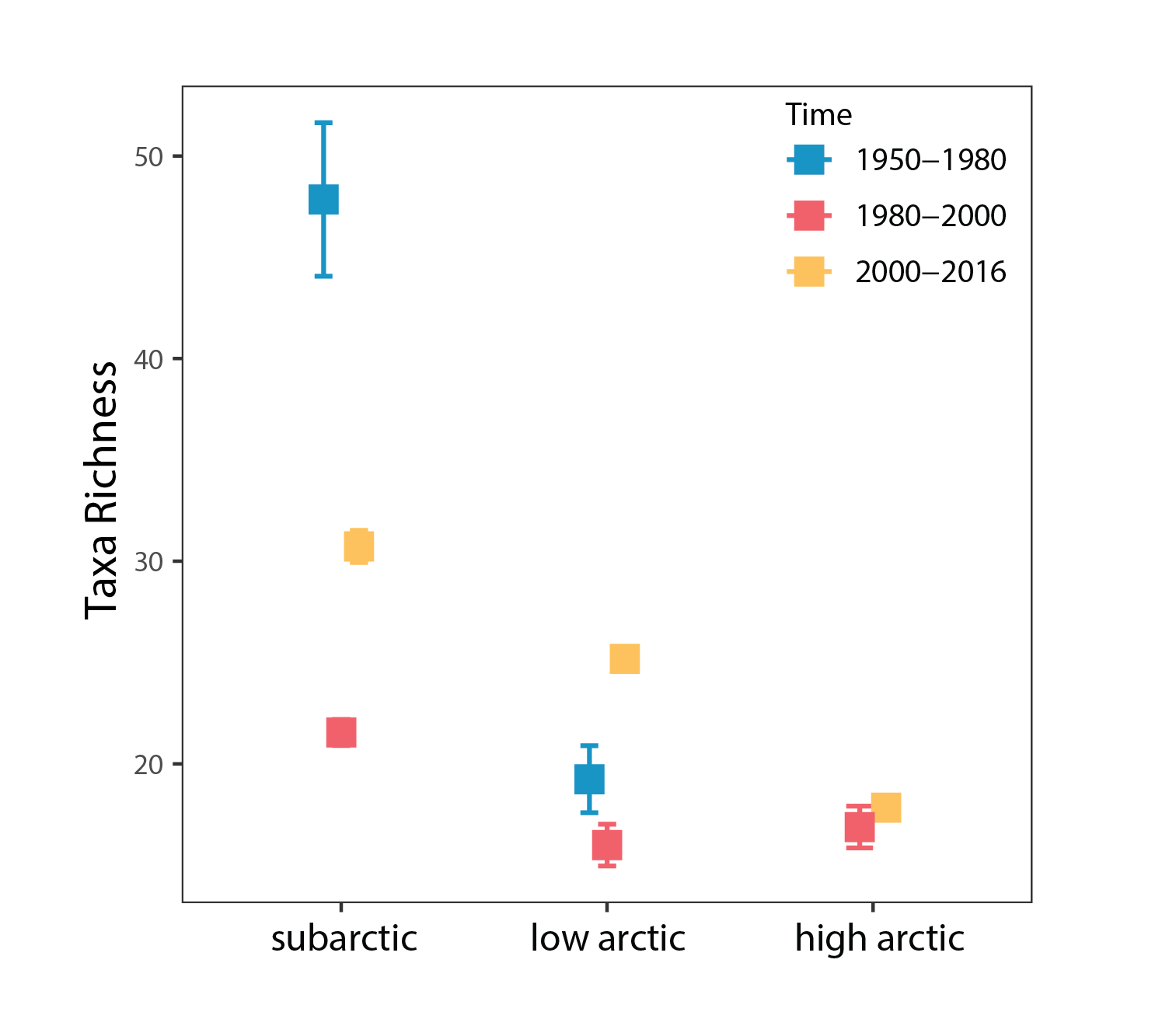
Phytoplankton species richness averaged by time periods ±SE in each Arctic region. State of the Arctic Freshwater Biodiversity Report - Chapter 4 - Page 49 - Figure 4-20
-
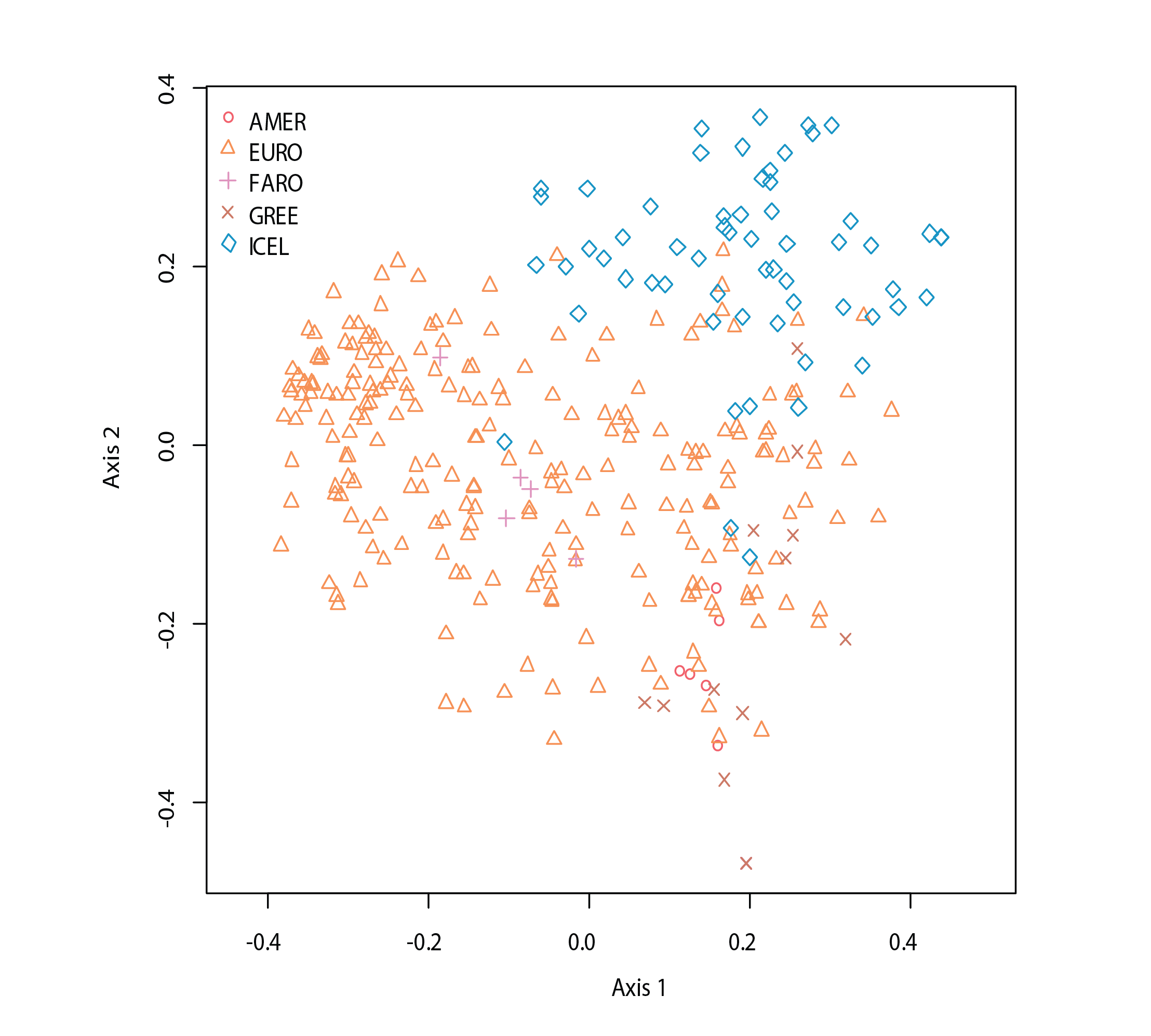
Orgination of macrophyte data (axis labels should be changed from Dim1 to Axis I and from Dim2 to Axis II), with symbols/colours differing by region. State of the Arctic Freshwater Biodiversity Report - Chapter 3 - Page 55 - Figure 4-24
-
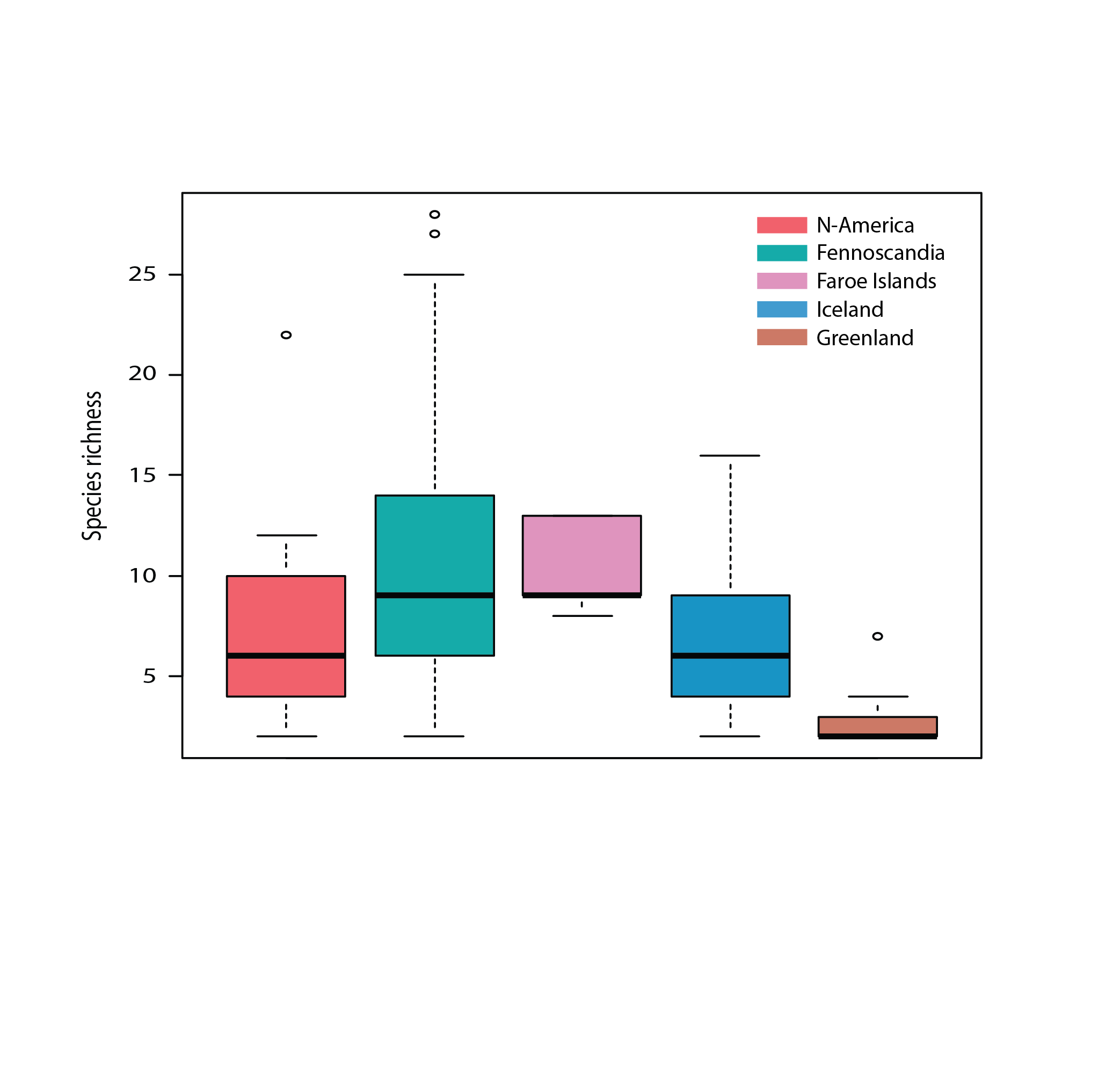
Figure 4 23 Species richness of aquatic macrophytes excluding mosses and algae in five geographic regions of the Arctic. Ame = North America, Fen = Fennoscandia, Far = Faroes, Ice = Iceland, Gre = Greenland. State of the Arctic Freshwater Biodiversity Report - Chapter 4 - Page 55 - Figure 4-22
-

Figure 3-3 Long-term trends in total phosphorus water concentrations (μg/L) in four major, unregulated rivers that drain the subarctic Arctic/alpine ecoregion of the Scandinavian peninsula, the Kalix river, The Lule river, the Råne river, and the Torne river. Slopes and p-values are given in the different panels. Boxes indicate medians and 25th and 75th percentiles, while whiskers give the 10th and 90th percentiles. State of the Arctic Freshwater Biodiversity Report - Chapter 3 - Page 21 - Figure 3-3
 CAFF - Arctic Biodiversity Data Service (ABDS)
CAFF - Arctic Biodiversity Data Service (ABDS)